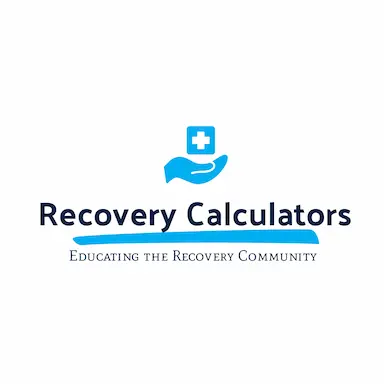Prozac and Alcohol: Dangers of Alcohol and Prozac Use

Prozac and alcohol safety: Learn about their interactions, potential risks, and essential precautions to protect your mental and physical well-being.
Understanding the SMAST Tool for Alcohol Rehab

The Short Michigan Alcoholism Screening Test (SMAST) is a valuable tool used to screen for alcohol use disorders. Developed as a streamlined version of the longer Michigan Alcoholism Screening Test, the SMAST focuses on identifying problematic alcohol use through a series of straightforward questions. This tool is especially useful in various settings such as luxury rehabs, as well as traditional alcohol rehabs, providing a quick yet effective way to assess the need for further intervention. Understanding the SMAST tool’s importance begins with recognizing its role in early detection. Early identification of alcohol use disorders can significantly impact the success of treatment and recovery. By using SMAST, healthcare providers can quickly determine if a person is struggling with alcohol misuse, allowing for timely and appropriate interventions. This can be crucial in avoiding severe consequences associated with prolonged alcohol abuse, such as health complications, social issues, and impaired daily functioning. The SMAST tool is comprised of straightforward questions that can be administered in a matter of minutes, making it an efficient option for both patients and healthcare providers. By pinpointing the severity of alcohol use, SMAST can guide healthcare professionals in designing personalized treatment plans that address the unique needs of each individual. This article will delve into how the SMAST tool works, highlight its key questions, and discuss the benefits of its use in alcohol rehabs. Questions answered in this article: What Does CIWA Stand For? What is a CIWA Score? Can CIWA-Ar Be Used For All Patients Experiencing Alcohol Withdrawal? Our Alcohol Addiction Treatment Centers Scottsdale Rehab Luxury Personalized Rehab Take a Tour HART Rehab Holistic Luxury Personalized Rehab Take a Tour Scottsdale Detox Luxury Medical Detox Take a Tour Recovery is just one step away. Reach out and discover treatment options.. Call Now Get Help How the SMAST Tool Works The Short Michigan Alcoholism Screening Test (SMAST) is a simplified tool designed to quickly assess alcohol use disorders. Unlike more extensive tests, the SMAST consists of only 13 questions, making it a time-efficient option for both patients and healthcare providers. The questions are carefully formulated to identify patterns and behaviors indicative of problematic drinking. The SMAST tool works by asking the patient a series of yes-or-no questions related to their drinking habits and the effects of alcohol on their life. Each “yes” answer is given a score of 1, and the total score is used to determine the presence and severity of an alcohol use disorder. A higher score suggests a more severe issue with alcohol consumption. This straightforward scoring system allows healthcare providers to quickly interpret the results and decide on the next steps for treatment. Administering the SMAST tool is simple. The test can be conducted in various settings like luxury rehabs, primary healthcare facilities, or even during routine medical check-ups. It requires minimal time, usually taking just a few minutes to complete. Once the results are in, healthcare providers can use the data to recommend appropriate interventions, whether it’s a referral to an alcohol rehab, a detailed evaluation using more complex tools like the CIWA-Ar (Clinical Institute Withdrawal Assessment for Alcohol), or immediate medical management. Key Questions in the SMAST Assessment The key to the effectiveness of the SMAST tool lies in its well-crafted questions. These questions are designed to reveal the impact of alcohol on a person’s life and help in identifying signs of alcohol use disorders. Here are some of the critical questions included in the SMAST assessment: 1. Do you feel you are a normal drinker?: This question aims to gauge the patient’s self-perception of their drinking habits.2. Do friends or relatives think you are a normal drinker?: Knowing others’ perceptions can give insight into how the patient’s drinking affects those around them.3. Have you ever attended a meeting of Alcoholics Anonymous (AA)?: Attendance at AA meetings might indicate recognition of a drinking problem.4. Have you ever lost friends or girlfriends/boyfriends because of drinking?: Social consequences often reflect the severity of alcohol misuse.5. Has drinking ever created problems between you and your close family members?: Family relationships often suffer due to excessive drinking.6. Have you ever gotten into trouble at work because of drinking?: Workplace issues can be a red flag for alcohol use disorders.7. Have you ever lost a job because of drinking?: Job loss due to drinking highlights severe consequences.8. Do you drink before noon fairly often?: Early drinking is a common sign of dependency.9. Have you ever had blackouts from drinking?: Memory loss indicates significant alcohol impairment.10. Do you ever feel guilty about drinking?: Guilt is a strong indicator of problematic behavior.11. Do you feel happier after drinking?: This question assesses whether alcohol is used as a coping mechanism.12. Do you ever drink alone?: Drinking alone can signify serious issues with alcohol.13. Do you keep alcohol hidden?: Hiding drinking habits is often a sign of addiction. Each of these questions targets a specific aspect of drinking behavior, providing a well-rounded view of how alcohol affects the individual. By analyzing the answers, healthcare providers can make informed decisions about the need for further assessment or intervention, tailored to the patient’s specific situation. This makes the SMAST an invaluable tool for early detection and effective treatment planning in various rehab settings. Key Questions in the SMAST Assessment The Short Michigan Alcoholism Screening Test (SMAST) is effective because of its focused questions. Each question helps to reveal patterns and behaviors that may indicate problematic drinking. Here are some of the critical questions asked in the SMAST assessment: 1. Do you feel you are a normal drinker?: This question helps understand the patient’s self-perception of their drinking habits.2. Do friends or relatives think you are a normal drinker?: Knowing what close ones think of the patient’s drinking can be insightful.3. Have you ever attended a meeting of Alcoholics Anonymous (AA)?: Attending AA may indicate that the person recognizes their drinking problem.4. Have you ever lost friends or relationships because of drinking?: Social consequences can be a red flag for unhealthy drinking.5. Has drinking
How Long Does It Take Alcohol to Leave Your System?

Discover the answer to “How long does it take alcohol to leave your system?” and understand its impact on your body’s metabolism and health.
Lexapro and Alcohol: Side Effects of Lexapro and Alcohol

Learn about the potential risks of combining Lexapro and alcohol. Discover why it’s important to understand the interaction between these substances.
Xanax and Alcohol: Awareness Effects of Alcohol and Xanax

Understanding the consequences: Xanax and alcohol interactions explained. Learn why combining them can be life-threatening.
How Long Does Alcohol Withdrawal Last? Quitting Alcohol

Discover the answer to “How long does alcohol withdrawal last?” and gain insights into managing this challenging phase.
Alcohol Poisoning: Discover the Signs of Alcohol Overdose

Learn about the risks and dangers of alcohol poisoning, and how to recognize and respond to it effectively. Your knowledge could save a life.
Guide to Detox: Steps for Effective Substance Cleanse

Embarking on a detox journey is a pivotal first step towards reclaiming your health and well-being from the grips of substance dependence. At our core, we understand that the decision to detox is not made lightly, and providing clarity on what to expect can demystify the process and ease anxieties. Detoxification is designed to rid the body of toxins accumulated from drug or alcohol abuse, and while it is a critical step, it is just the beginning of a recovery journey. We are committed to guiding you through this vital phase with comprehensive support that tailors to your individual needs. Our approach integrates the use of proven medical calculators, such as the CIWA, designed to assess withdrawal symptoms accurately and ensure a safer detox process. By preparing you for each stage of detox, we aim to not only cleanse your body but also strengthen your resolve to pursue a lasting recovery. Understanding and navigating the detox process effectively calls for a clear roadmap. This is why we emphasize essential preparations, what to realistically expect during detox, and strategic steps to take once detox is complete. We equip you with knowledge and support, facilitating a smoother transition to subsequent stages of rehabilitation. Let’s begin this journey together, with every step aimed at nurturing recovery and restoring balance to your life. Understanding the Basics of Detox Detoxification, or detox, serves as the initial step in freeing your body from the toxins associated with drug and alcohol use. The main objective here is to stabilize your health safely and prepare you for further rehabilitation steps. This critical phase involves managing withdrawal symptoms that may arise as your body adjusts to the absence of substances it has grown accustomed to. At our facility, we utilize tools like the Clinical Institute Withdrawal Assessment for Alcohol (CIWA) to effectively monitor and manage these symptoms, ensuring that your detox process is as comfortable and safe as possible. We engage in a carefully constructed approach to detox that respects the individual complexities of each person’s history with substance use. This means personalized care plans that are based on comprehensive assessments using not only CIWA but also other specialized tools within our addiction calculator suite. These resources help us to tailor detox treatments that meet your specific needs, thus increasing the efficiency and efficacy of the detoxification stage. Essential Pre-Detox Preparations Before beginning the detox process, it’s crucial that individuals undergo a series of strategic preparations. We believe in a holistic approach to readiness, which not only addresses physical readiness but also psychological preparedness. First and foremost, we ensure a thorough medical examination to evaluate health status and any underlying conditions that might affect the detox process. This examination includes screenings using the SMAST (Short Michigan Alcoholism Screening Test) to understand the extent of alcohol influence and to design an intervention accordingly. Preparing your mind for detox is equally important. We provide counseling sessions to help mentally equip you for the changes your body and mind will experience. These sessions involve discussing strategies to handle potential stressors and cravings, setting realistic expectations, and building a strong support system among family, friends, and peer groups. Additionally, ensuring that your living environment supports a substance-free lifestyle is crucial, which might mean removing triggers or harmful influences that could jeopardize your commitment to recovery. These comprehensive preparations pave the way for a smoother detox journey and foster a stronger foundation for continued rehabilitation efforts. What to Expect During Detox Detoxification is the foundational step in your journey to recovery, serving to clear your body of toxins accumulated due to drug or alcohol dependency. As we guide you through this process, it’s crucial to set realistic expectations and understand that while detox is challenging, it’s a pivotal stride towards a healthier life. During detox, you may experience a range of symptoms that can vary widely in intensity, including anxiety, physical discomfort, mood swings, and sleep disturbances. We utilize medically supervised protocols, including CIWA, to safely manage alcohol withdrawal, ensuring that your detox is as comfortable and effective as possible. We monitor progress meticulously to adjust care as needed, providing medication-assisted treatments to help alleviate severe symptoms and reduce cravings. Our priority is your safety and comfort, making sure that you receive supportive care in a setting equipped to handle the complexities of withdrawal symptoms. Remember, the length and intensity of detox can vary based on the duration and extent of your substance use, but our team is here to support you every step of the way. Next Steps After Completing Detox Completing detox is a significant accomplishment and marks a crucial phase in your recovery journey. As we celebrate this milestone, our focus shifts to ensuring that you have a robust plan for the next stages. Post-detox, engaging in a comprehensive rehabilitation program is essential. These programs are designed to address the psychological aspects of addiction, helping you develop coping strategies, understand the root causes of your dependency, and build a supportive network. We offer a range of therapeutic options, including individual counseling, group therapy, and relapse prevention education, tailored to meet your specific needs. Continuing care might involve outpatient services, therapy sessions, and participation in community support groups like Alcoholics Anonymous or Narcotics Anonymous. By creating a personalized post-detox treatment plan, we strive not only to help you stay sober but also to empower you to achieve and maintain a fulfilling, substance-free life. Conclusion At Recovery Calculators, we pride ourselves on providing a supportive and effective detoxification process, equipped with the latest CIWA assessment tool to ensure safety and comfort. Our commitment to your health doesn’t stop at detox; it continues through every phase of your recovery journey. If you or a loved one is ready to take the first step towards reclaiming life from substance dependency, contact us today. Together, we’ll pave the path to a brighter, healthier future.
How to Use the SMAST Tool for Alcohol Screening

Alcohol addiction is a serious issue that affects millions of people around the world. To help identify and address this problem early, healthcare providers use various screening tools. One of the most effective tools for this purpose is the Short Michigan Alcohol Screening Test, or SMAST. This tool is designed to quickly and accurately measure a person’s alcohol use and its impact on their life. Understanding how to use the SMAST tool can be very helpful for anyone working in or seeking services from alcohol rehabs. Whether you are in a luxury rehab facility or a local community center, this tool can provide crucial insights into a person’s drinking habits. It helps in identifying those who might need more intensive care, making it easier to create tailored treatment plans. In this article, we will explore what the SMAST tool is, its purpose, and how to administer it correctly. We will also discuss how to interpret the results for effective screening and why integrating SMAST with other tools can offer a more comprehensive approach to alcohol addiction care. By the end, you will have a clear understanding of how this tool can be a valuable resource in the fight against alcohol addiction. What is the SMAST Tool and Its Purpose The Short Michigan Alcohol Screening Test (SMAST) is a widely used tool designed to identify individuals who may have problems with alcohol. Developed from the longer Michigan Alcohol Screening Test (MAST), the SMAST provides a quicker yet effective method to recognize alcohol use disorders. This tool consists of a series of 13 yes-or-no questions that focus on a person’s drinking habits and the consequences of their alcohol consumption. The purpose of the SMAST tool is to offer a simple, reliable way to screen for alcohol problems. By asking about behaviors and issues related to drinking, the tool helps healthcare providers understand the severity of a person’s alcohol use. This is crucial in both drug rehabs and alcohol rehabs, where timely identification can lead to more effective intervention and treatment plans. Using the SMAST tool can help prevent the progression of alcohol addiction by catching it early. Whether in luxury rehabs or local community centers, this tool provides valuable insights that can guide treatment decisions. Additionally, it allows for a more targeted approach, ensuring that individuals receive the care they need based on their specific circumstances. How to Administer the SMAST Tool Administering the SMAST tool is straightforward, making it easy for both healthcare providers and individuals to use. The tool is typically given as a questionnaire, where the person answers a series of yes-or-no questions. These questions cover various aspects of drinking behavior and its impact on daily life. To administer the SMAST tool effectively, follow these steps: 1. Prepare the Questionnaire: Ensure you have a copy of the 13-question SMAST form. This can be done on paper or electronically. 2. Explain the Purpose: Before starting, explain to the person why they are being asked these questions. Let them know that the purpose is to understand their drinking habits better and to help them if they need it. 3. Ask the Questions: Read each question aloud to the person or have them read it themselves. Make sure they understand each question before they answer. 4. Record the Responses: Note down the person’s responses carefully. Each “yes” answer is scored as one point. 5. Sum the Scores: Add up the total number of “yes” responses to get a final score. Here are a few sample questions you might ask: – Do you feel you are a normal drinker? (By normal, we mean you drink less or as much as most other people) – Have you ever awakened the morning after some drinking the night before and found that you could not remember a part of the evening? – Does your spouse, or a parent, ever worry or complain about your drinking? These questions help paint a picture of the individual’s relationship with alcohol. Administering the SMAST is simple but requires attention to detail and empathy to make the person feel comfortable and understood. Interpreting SMAST Results for Effective Screening Interpreting the results of the SMAST tool is crucial for determining the next steps in a person’s care. The score from the SMAST tool can range from 0 to 13, with each “yes” answer contributing one point to the total score. Here’s how to interpret the scores: – 0-2 Points: This range typically indicates low or no alcohol problems. The person is likely a social drinker without significant issues related to alcohol. – 3-5 Points: A score in this range suggests moderate alcohol problems. This person may benefit from further evaluation and perhaps some form of brief intervention to address their drinking habits. – 6 or More Points: Scores of six or above indicate a strong likelihood of alcohol use disorder. This person should be referred for a more comprehensive assessment and potentially more intensive treatment, such as those offered in alcohol rehabs or luxury rehabs. Understanding these scores helps in making informed decisions about the level of care needed. In places like Scottsdale rehabs and Phoenix rehabs, this interpretation can guide healthcare providers in recommending suitable treatment options, ensuring a personalized approach to recovery from alcohol addiction. Integrating SMAST with Other Screening Tools for Comprehensive Care While SMAST is a powerful tool for screening alcohol problems, using it alongside other tools can offer a more complete picture of a person’s substance use. Integrating SMAST with other screening tools like CIWA (Clinical Institute Withdrawal Assessment for Alcohol) and COWS (Clinical Opiate Withdrawal Scale) can enhance the accuracy and depth of the assessment. Here’s how these tools can be used together: – CIWA: This tool is specifically used to assess the severity of alcohol withdrawal symptoms. By combining SMAST with CIWA, healthcare providers can identify both the extent of alcohol use and the immediate needs during detox. – COWS: For individuals dealing with both alcohol and opiate addiction, using COWS helps in measuring
Delirium Tremens: Dangers of Alcohol Withdrawal

Navigate the complexities of delirium tremens and gain insights into its diagnosis and treatment through our expert-led resources.

